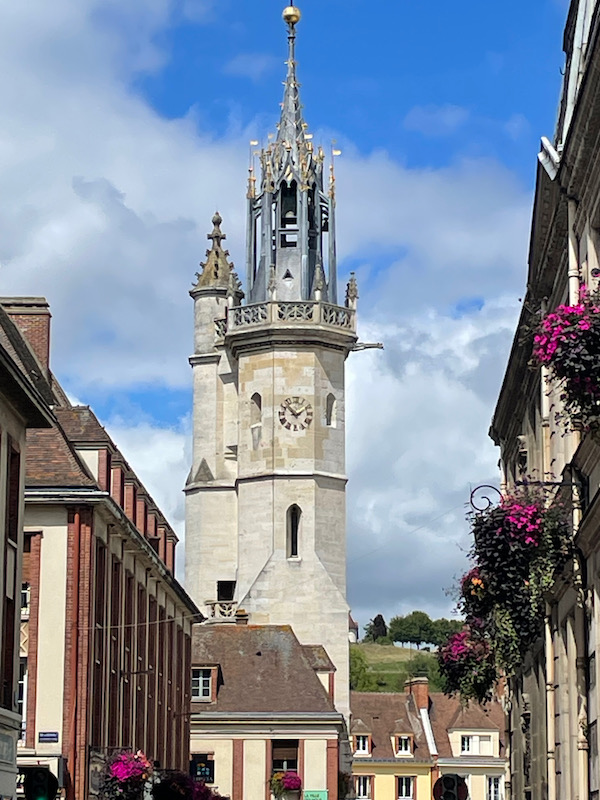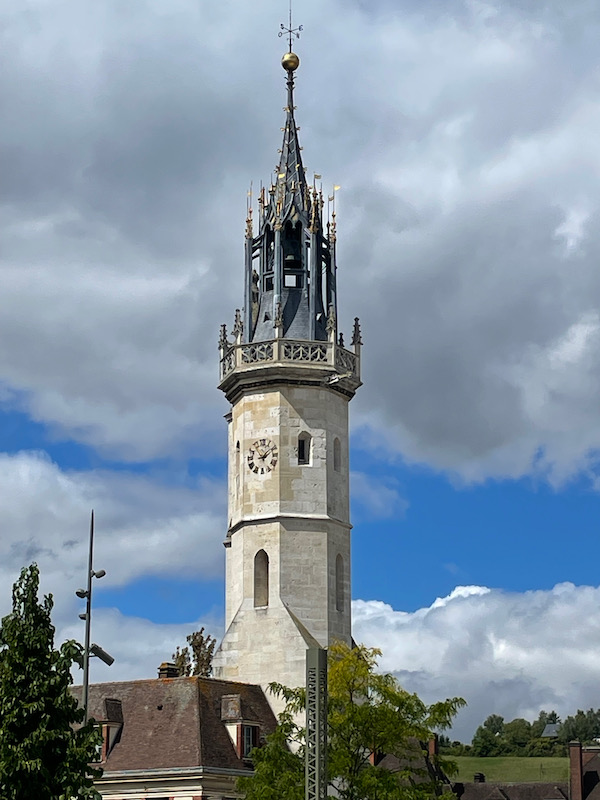Our Blog - Normandy 2023 - Évreux, France
There was a gallic tribe inhabiting the area in the 4th century BC, who then were conquered by the Romans in 52 BC. Julius Caesar supposedly had 8 legions in the area after the battle of Gaul (56-55BC). In the Middle Ages, the area belonged to the Duchy of Normandy until the 14th century, when it passed to the Kingdom of Navarre through the marriage of Philip d'Évreux to Joan II of Navarre. In the 19th and 20th centuries, there were several textile and armament factories, but as those went away, the city turned to more high-tech industries. A large factory for GlaxoSmithKline was created in 1968 (and is still there) and a Philips factory was opened in the 1950's but closed in 2006.
Évreux was heavily damaged during the Second World War, and most of its centre was rebuilt. Despite the damage, there are a few historic monuments that remain.
The most important site that we visited was the Notre-Dame cathedral, which you will notice we visited on 2 different times during the day. The first time, it was cloudy and overcast (and closed) and so we had to come back a few hours later when it opened, and by then, there were nice blue skies! It was started in the 11th century, burned down in 1119, and rebuilt in 1126. It was damaged during both the French Revolution and WWII, including losing all of the 16th century statues to be used as the foundation of a bridge during the French Revolution. The last restoration was done in 1973, so we can see it back to *most* of its former glory, including the lantern tower which has been there since the Middle Ages. There are several styles here, flamboyant Gothic, Renaissance, as well as late Gothic.
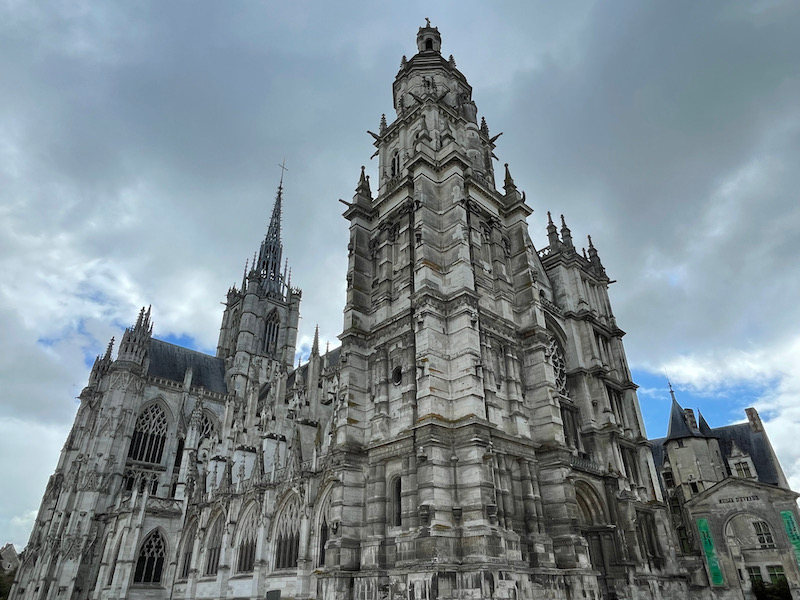
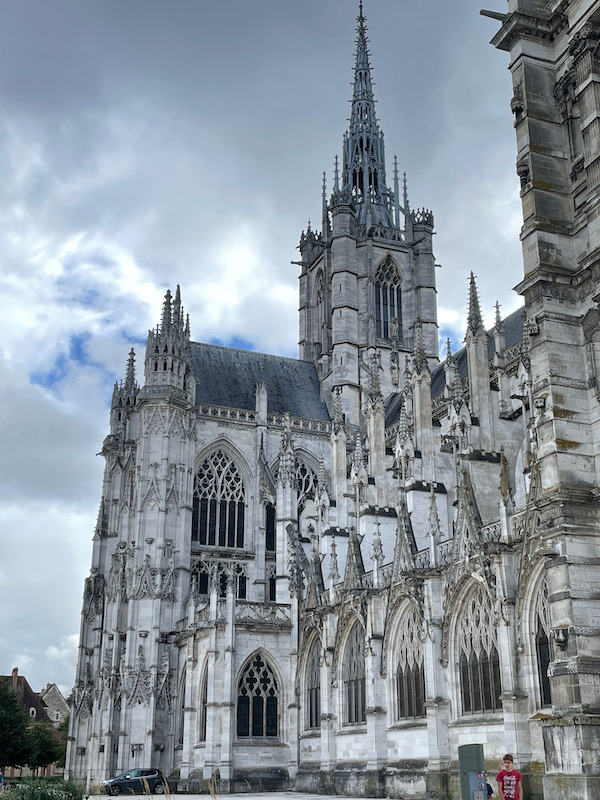
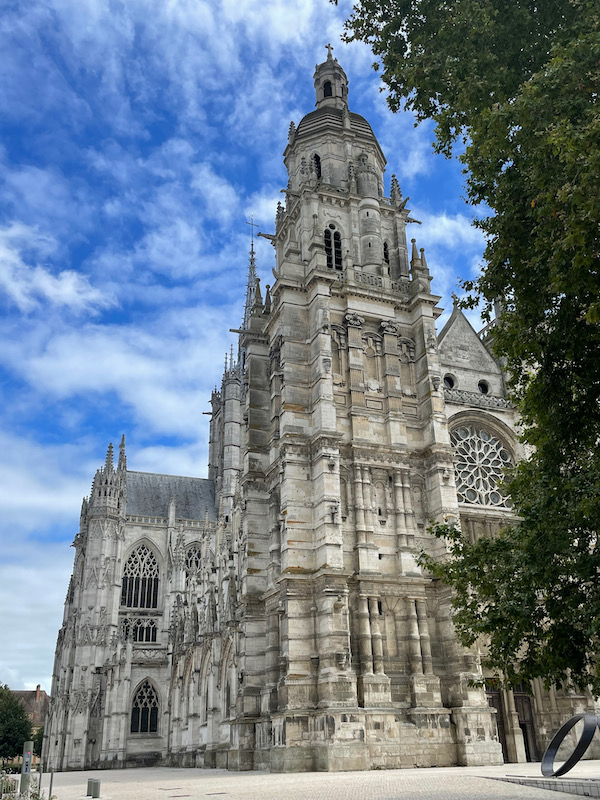
The nave is surrounded by large Romanesque arcades, which contrast with the radiant Gothic choir that was added in 1260. There are also quite a few Gothic decorations over doorways, chapels, and the tracery on the upper-stories.
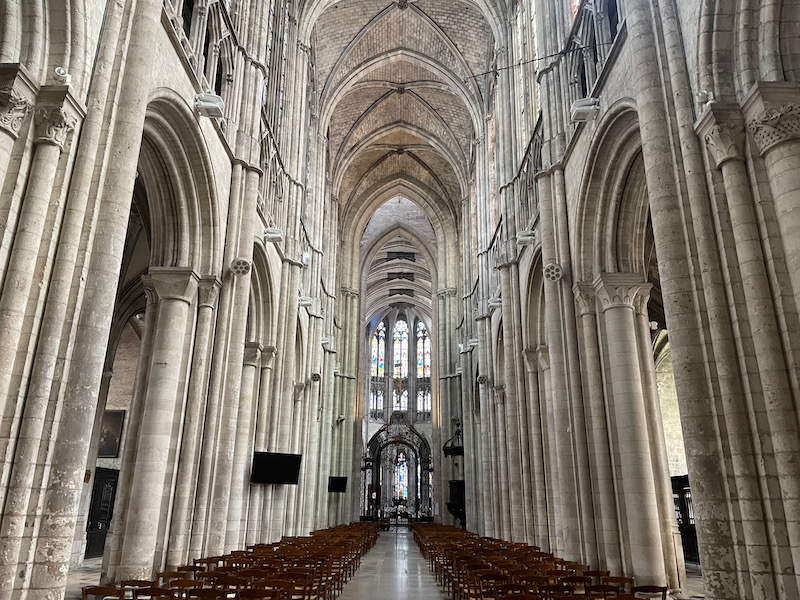
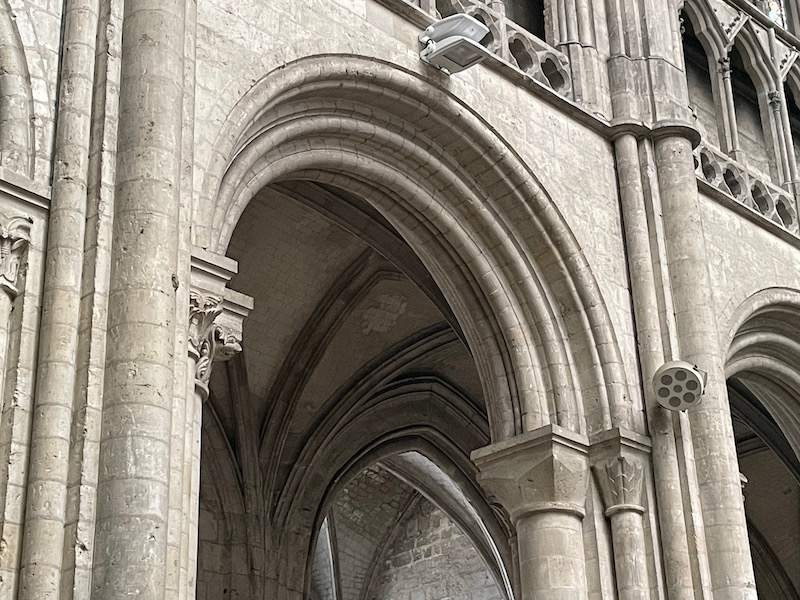
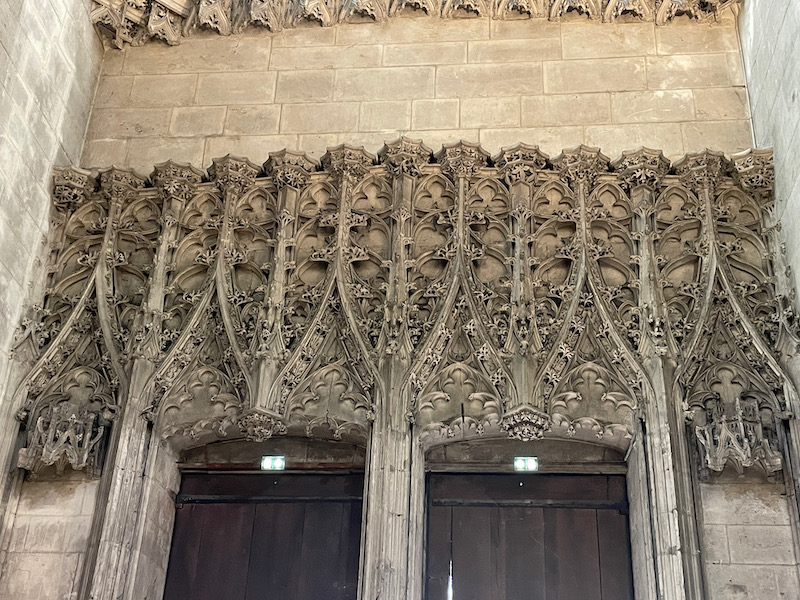
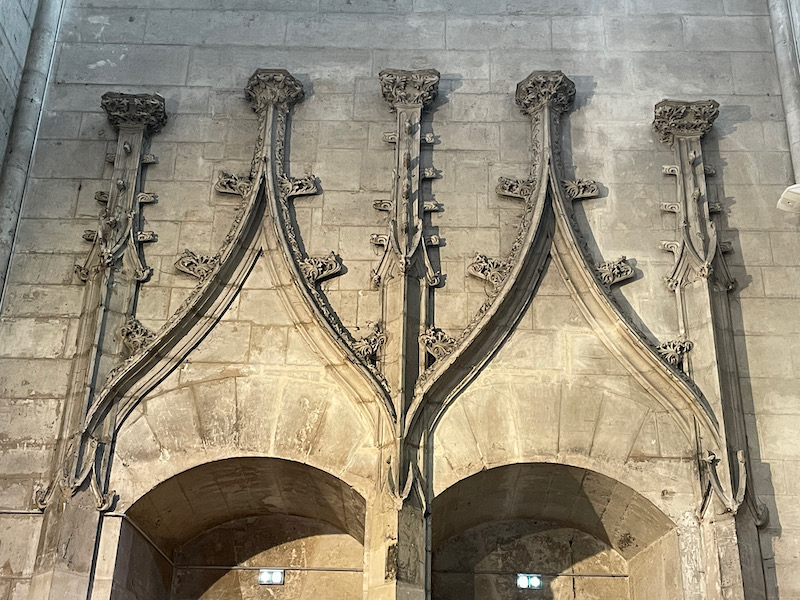
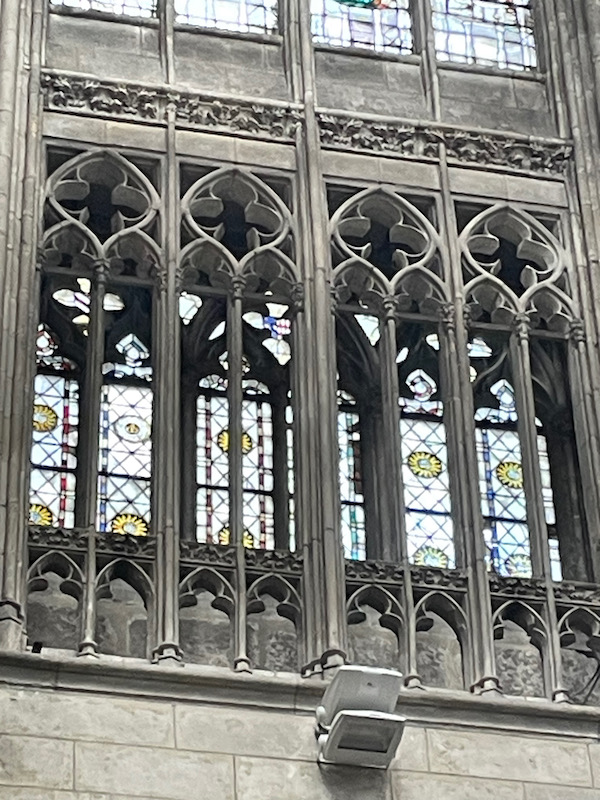
The side chapels were all enclosed with their own individual rood screens that date from the 15th to 17th centuries.
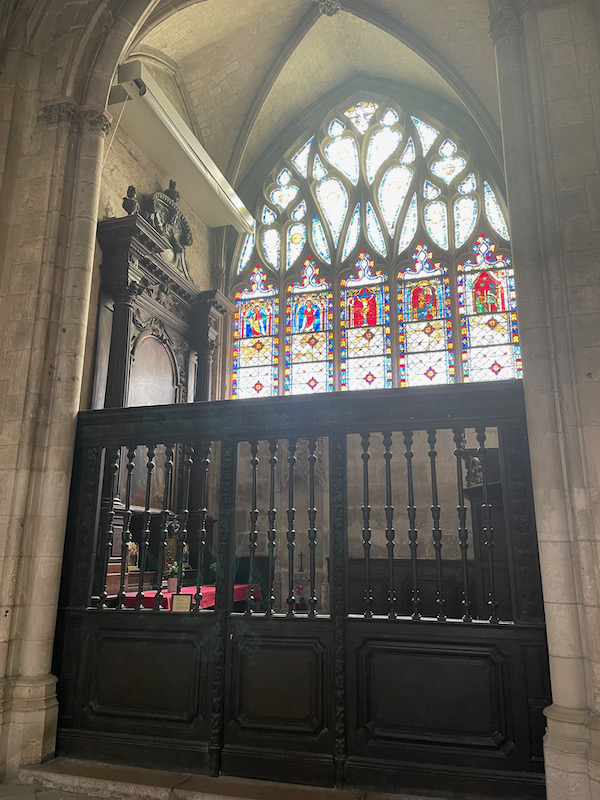
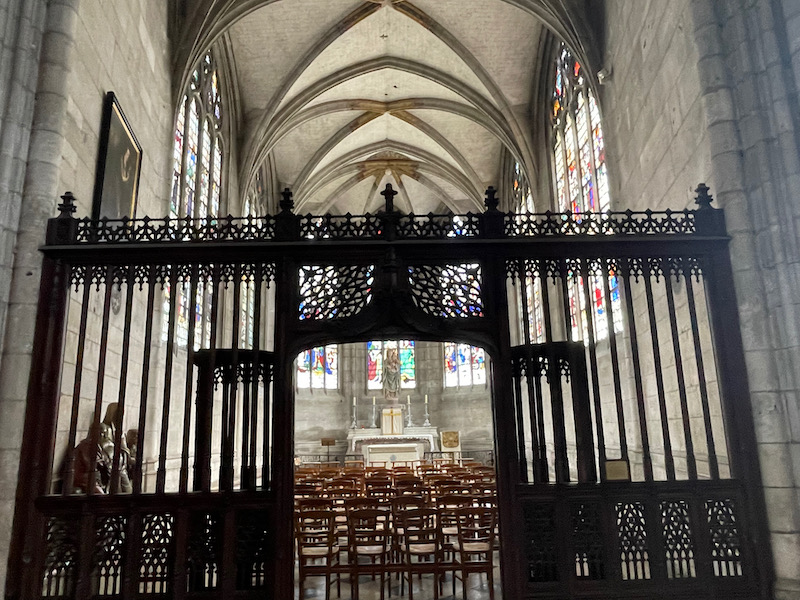
The stained-glass windows, some dating as far back as the 14th century, were removed and stored during WWII and then put back up in 1953. I grabbed 2 examples, including this first one representing the Tree of Jesse in the apsidal chapel.
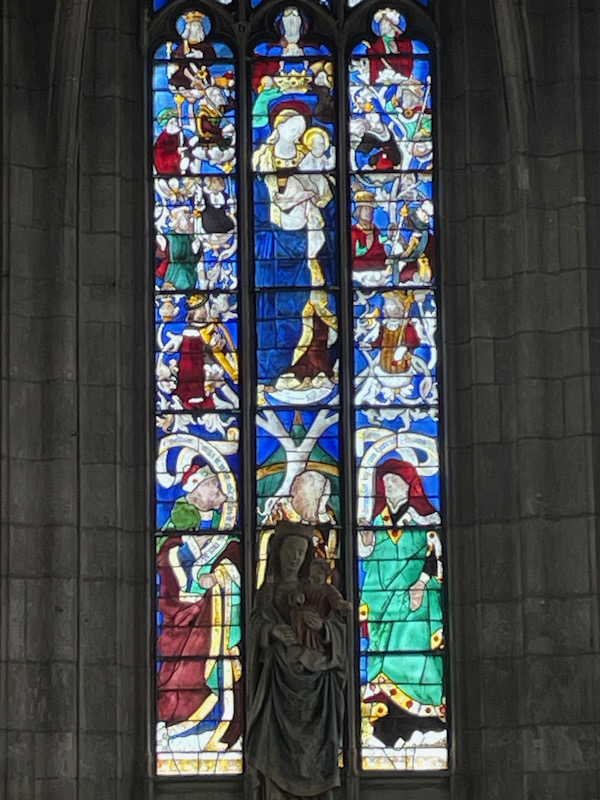
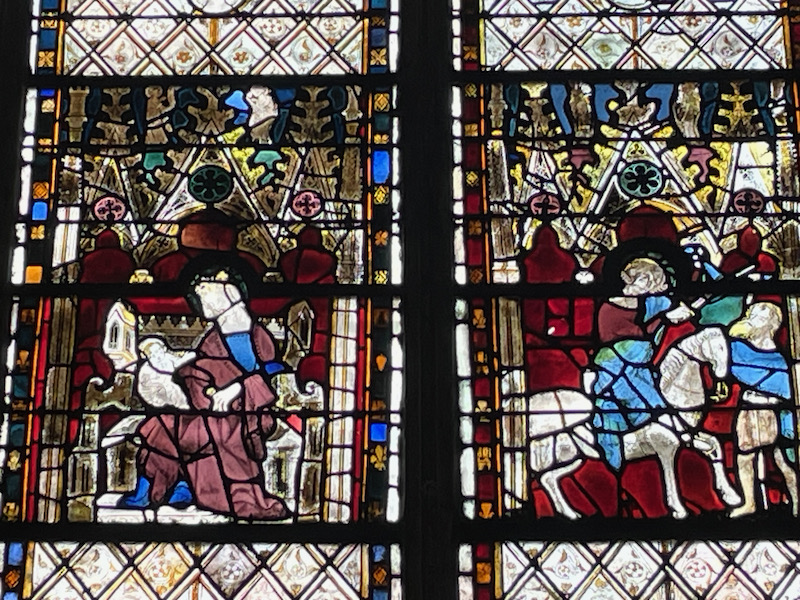
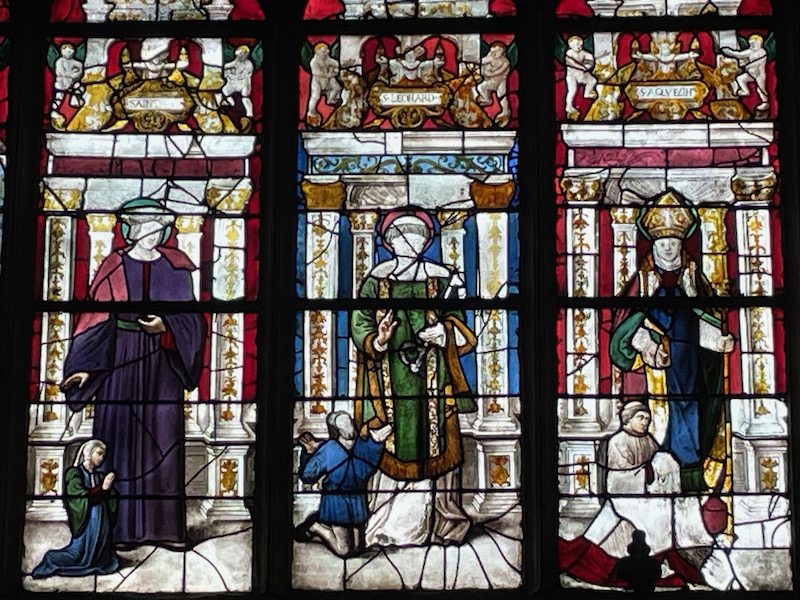
The organ is unique but not in the normal sense for a French cathedral. This one dates only from 2006 and was made by Pascal Quoirin, who is actually a quite famous organ maker (he was consulted after the fire at Notre-Dame in Paris).
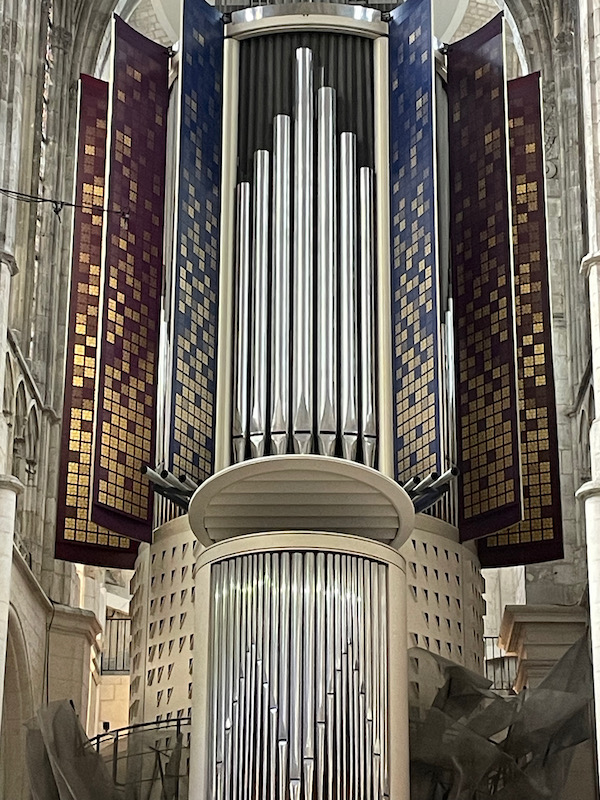
The pulpit, installed in 1811, comes from the abbey of Bec-Hellouin (which you will see the exterior of later). It was sculpted in 1675 by Guillaume de La Tremblaye.
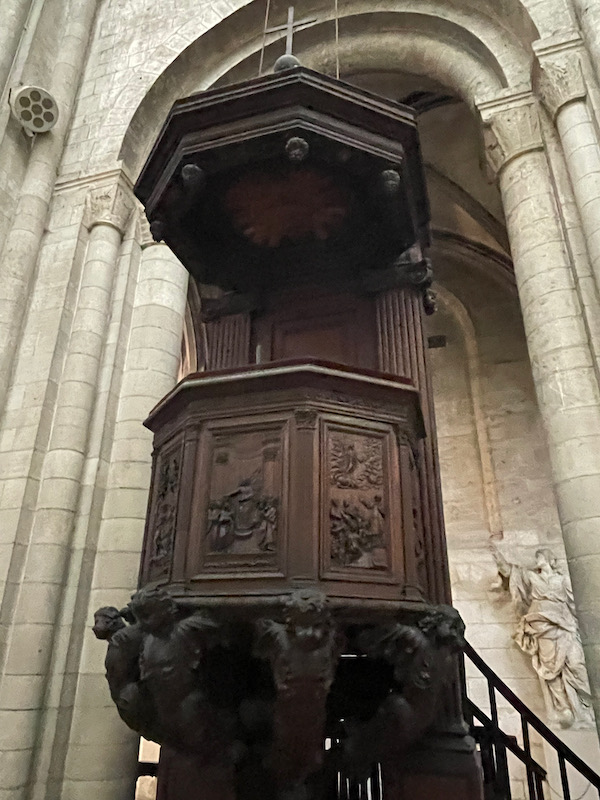
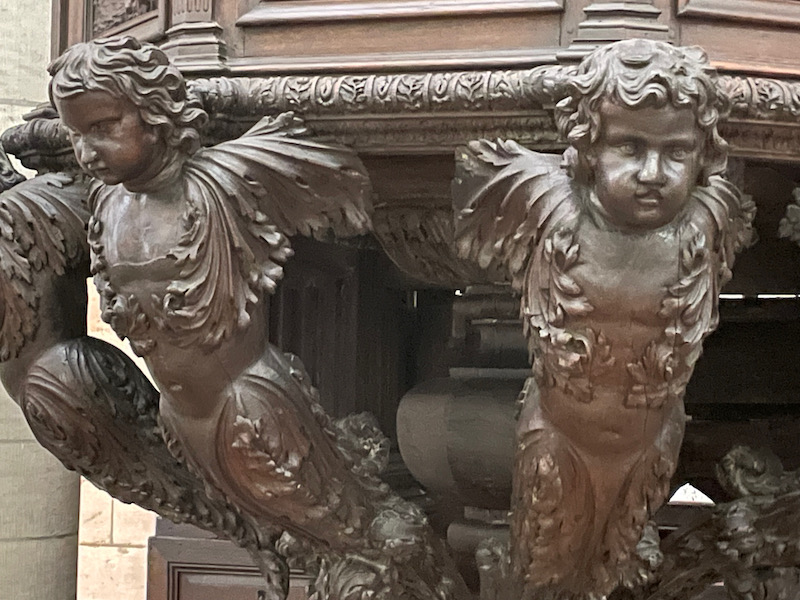
According to the legend of Saint Taurin, the tomb of this holy bishop was discovered in the 6th century and a modest wooden oratory, was built here to hold the tomb. It was destroyed during the Norman invasions at the end of the 9th century and the Saint-Taurin church was then built in the 10th century. The choir is in the Gothic style of the 15th century, while the nave is a mixture of Romanesque from the 12th century and 15th century Gothic.
One façade is in a very classical style, dating from the 17th century, and looks more like a theater to me than a church. The tympanum over the entry door on the side, which has been so heavily damaged that I am surprised we know anything about it, supposedly shows Christ surrounded by the Evangelists, who are each shown with a human body but the head of the symbolic animal attributed to them.
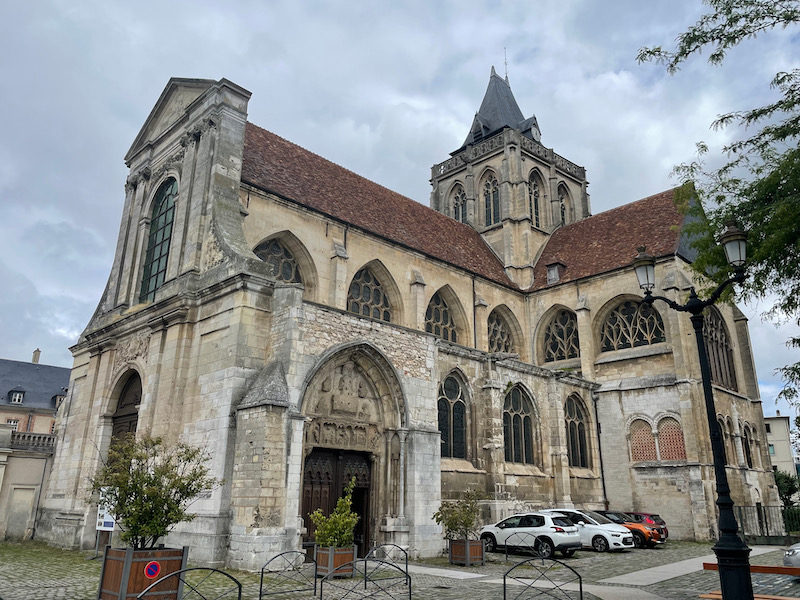
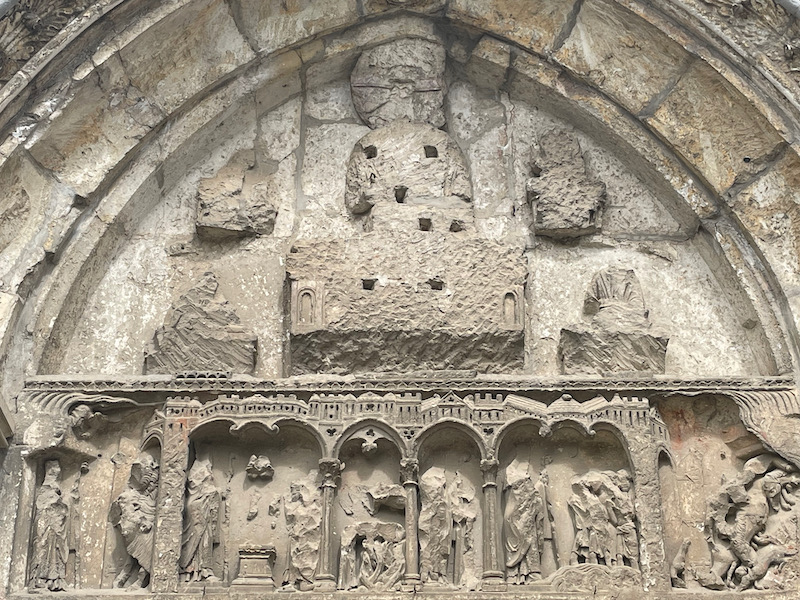
The nave and aisles are an interesting combination of 12th century Romanesque arches (on the left side) and 16th century more Gothic pointy arches (on the right side). This first picture shows it quite well ... compare the left arch (shorter and round with classical column capitals) to the right arch (higher and a little pointy with really no decoration where the column ends and the arch starts). In the 2nd picture, you can a Gothic pointed arch of the side aisle looking through the rounded Romanesque arch. Some of the carvings at the bottoms of the ribbed vaults are also quite funny, with interesting faces.
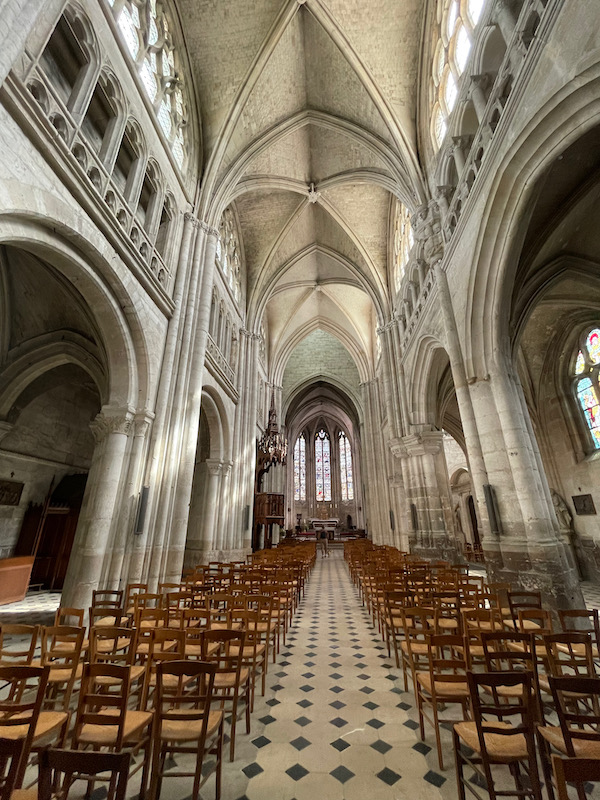
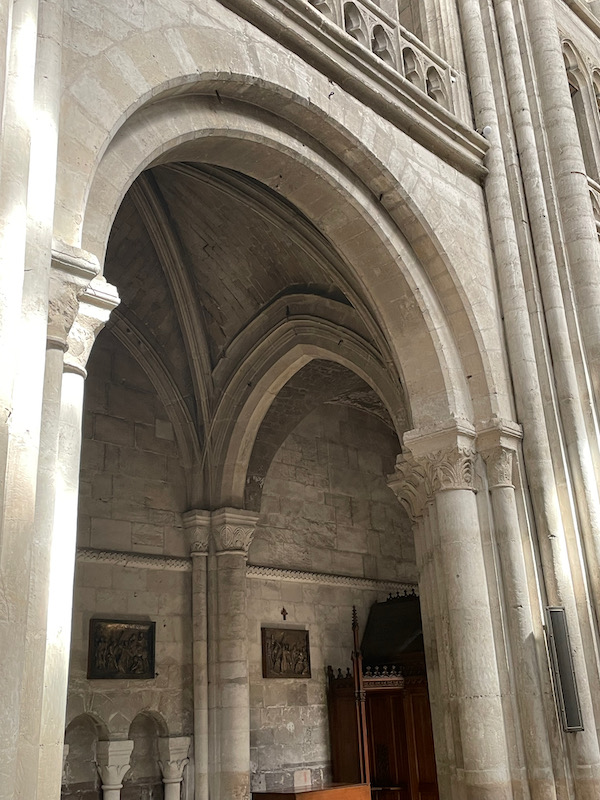
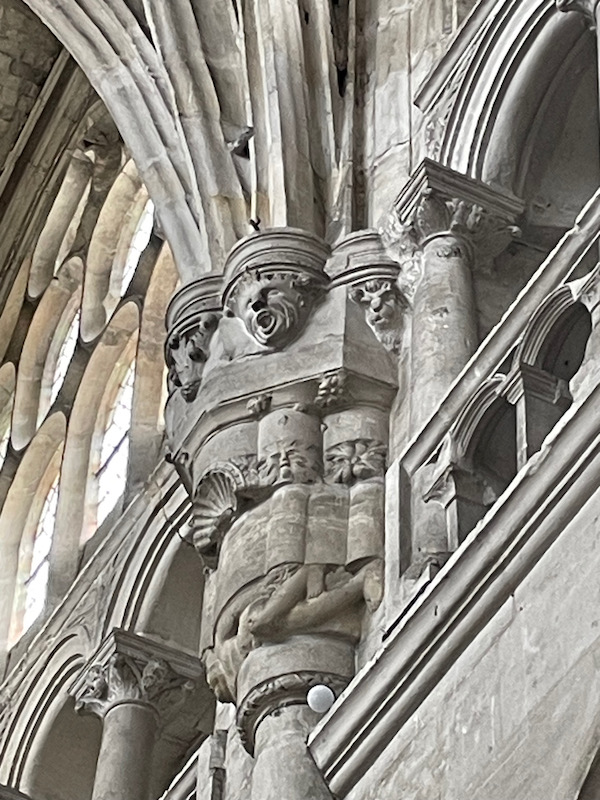
A 19th-century carved wood pulpit has the 12 signs of the zodiac along with Moses and Jesus Christ.
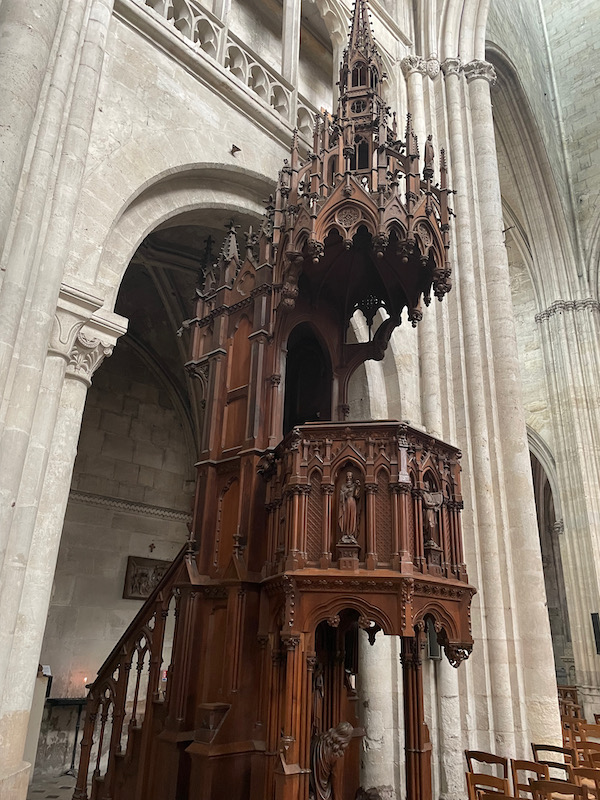
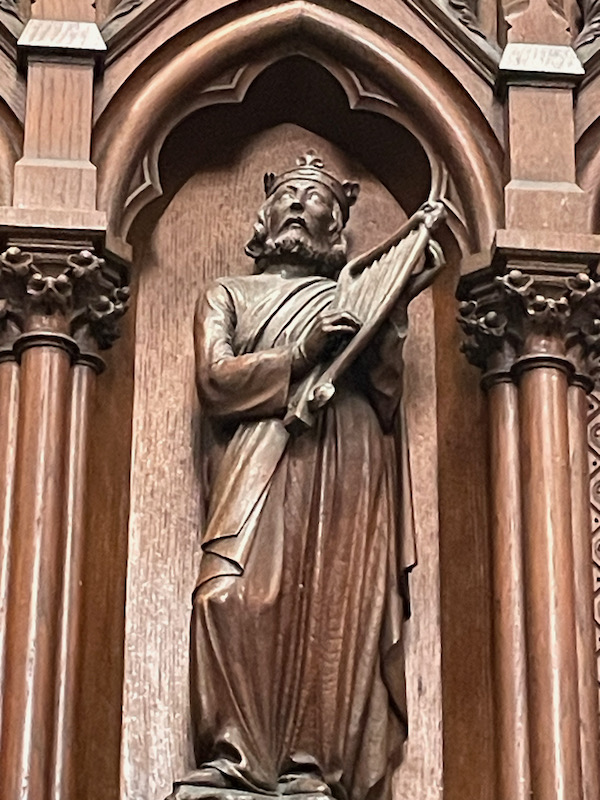
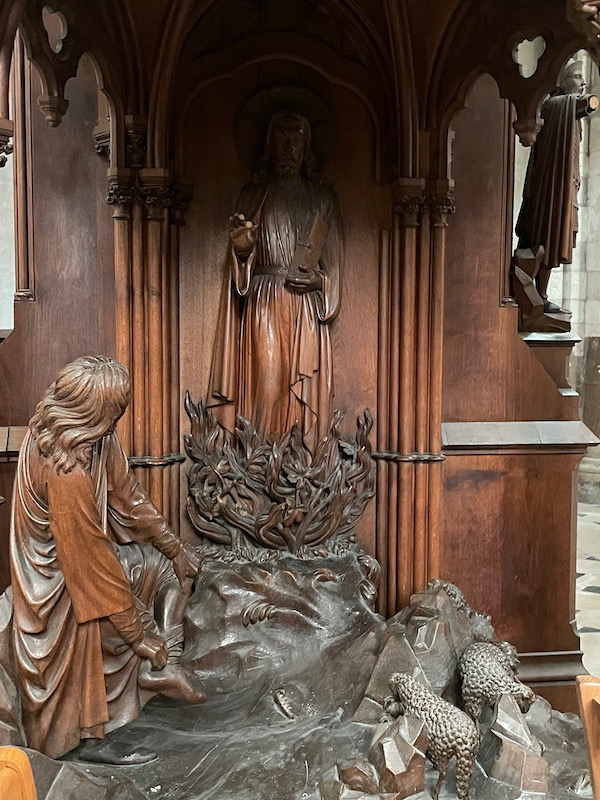
The choir stalls are also quite nice and quite different from most stalls, which have solid backs. Here, you can see the intricate detailed carving in the open backs.
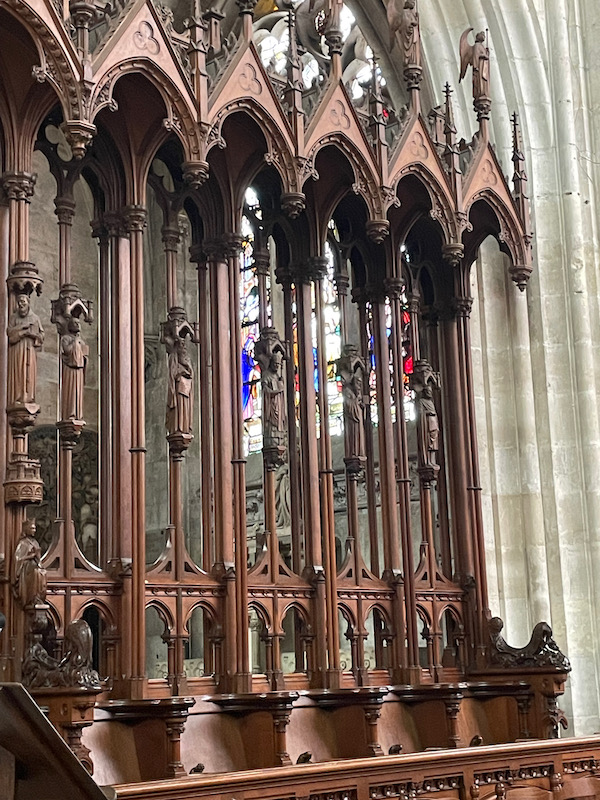
A 17th-century statue of St. Michael killing the black devil below.
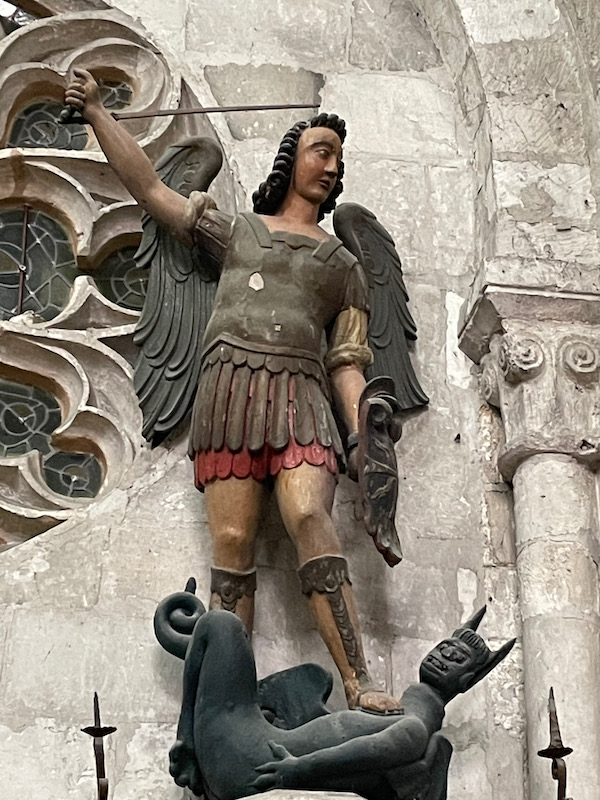
The stained-glass windows mostly date from the 15th century.
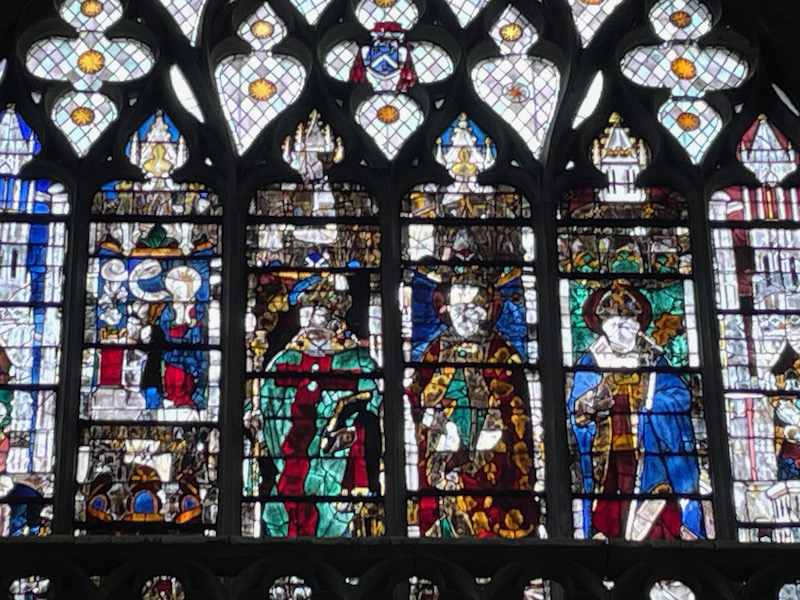
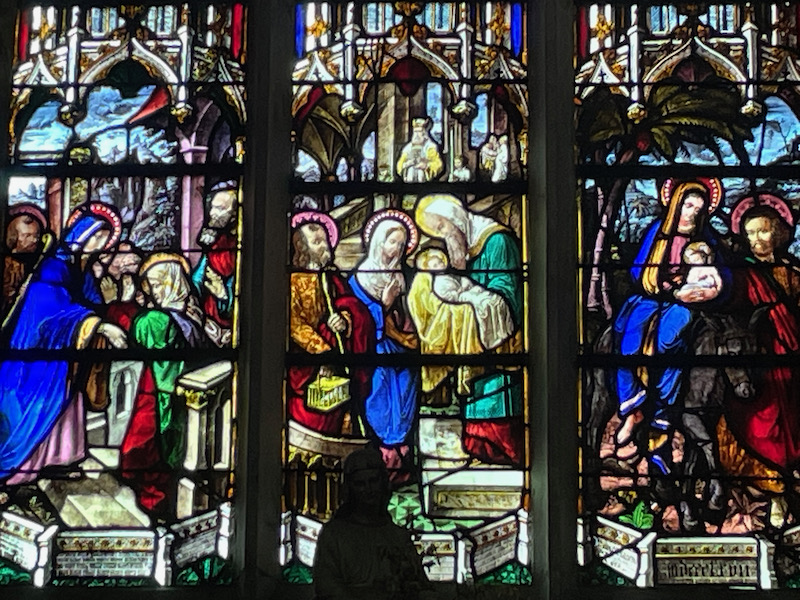
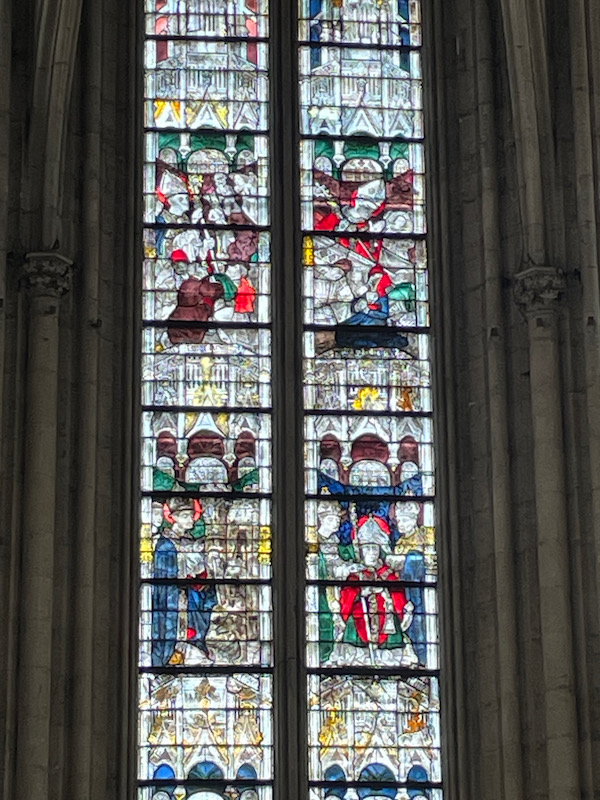
The Clock Tower was built in the 15th century. It is 44m high and has 140 steps to the top. Before 1396, a tower of the cathedral served as a watchtower for the inhabitants of the city, who had a bell there to sound the alarm. In 1396, the town became one of the first towns in the kingdom to have a clock. By 1464, the inhabitants wanted to demolish the old tower, which happened in 1481 when King Louis XI had it demolished. The clock was kept temporarily in a church while the new tower was built, and then put back in 1498.
